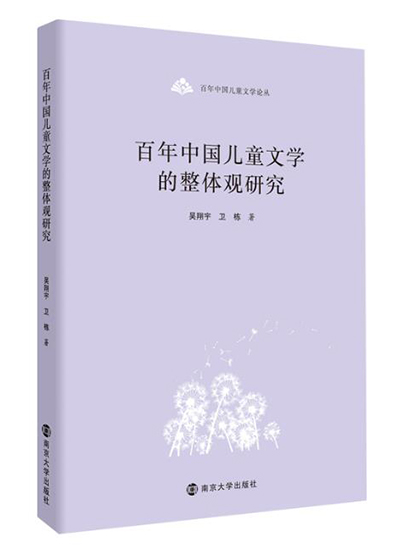A holistic view of Chinese children’s literature

A Holistic Study of Centennial Chinese Children’s Literature
A Holistic Study of Centennial Chinese Children’s Literature, co-authored by Wu Xiangyu and Wei Dong, scholars from the Research Center for Children’s Literature at Zhejiang Normal University, proceeds from the integration process and holistic view of children’s literature.
The holistic view of literature is bound to include historical facts, theory, thoughts, and works. The book is not just a linear display of children’s literature chronicles, nor a simple list of writers and their works. It associates the evolution of views on children with the modern Chinese dynamic cultural structure, integrates the individual phenomenon in children’s literature with the theoretical exposition of Chinese literature, and links the discipline’s internal and external development, Chinese and foreign resources, and social functions.
The book focuses on the evolution of Chinese children’s literature and the interaction between underlying views on children and cultural resources, while elaborating upon the disciplinization process and interdisciplinary expansion of Chinese children’s literature.
Before the 1980s, the history of Chinese children’s literature was mainly written within an arrangement of historical literature, lacking an induction and analysis of history. Since then, theoretical criticism of children’s literature has boomed. However, with numerous Chinese and Western theoretical writings and historical views, it is contentious among scholars to declare which can truly reflect the creative achievements and thought trends of each time, and which can serve as guidance for the present and future development of Chinese children’s literature.
Adopting the system theory, the book tries to construct a theoretical framework on the axis of modern and contemporary China that takes in both ancient and modern, domestic and international research, in order to cover internal and external research of the field. In addition, the method remedies the phenomenon of “discussing history with history and divorcing from reality.” Children’s literature is not a mouthpiece for political stances and cultural policies. Rather, its development in itself is closely related to China’s modern revolutionary and political context.
As a modern landscape, since its birth children’s literature has been inseparable from thought on China’s “modernity.” Therefore, its appearance must be depicted in the dynamic context of three-dimensional synthesis. Given that modern Chinese history itself is a mixture of ancient and modern cultural collision and resource exchange with other countries, ignoring the complex historical background and plural influential factors that affect the generation and development of Chinese children’s literature and going into an isolated and static research field, will undoubtedly drive the discipline to a dead end.
Xie Yirong is from the Research Center for Children’s Literature at Zhejiang Normal University.
Edited by YANG LANLAN
